Following this we drove to Ephesus, beating most of the tour buses. Atilla led us through at a fine pace and explained everything wonderfully. He attends regular training sessions by archeologists to stay on top of the discoveries and understanding of the site and this really came through in his tour. It was top quality!
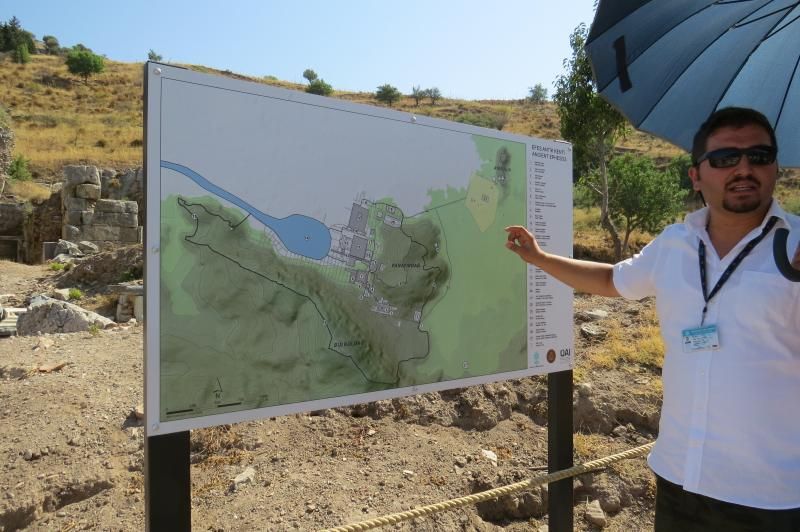 The site itself was fascinating and much more extensive than we had realised. This was a large and busy town! As we progressed through it got more and more crowded and the day got hotter and hotter.
The site itself was fascinating and much more extensive than we had realised. This was a large and busy town! As we progressed through it got more and more crowded and the day got hotter and hotter.
I’m going to post a selection of photos whatever explanation I can recall - if any. It was an amazing site but so much to take in!
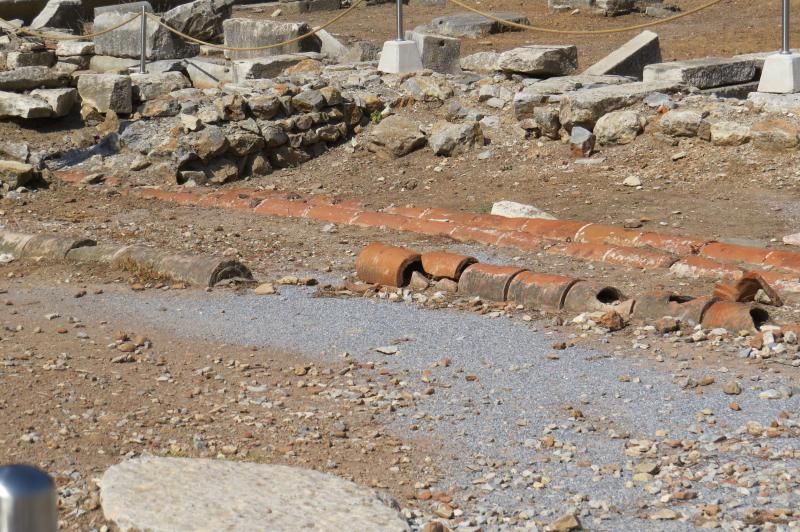 |
| Terracotta water pipes |
 |
| Many of the buildings had gleaming white marble facades but behind were hard packed walls of mud and rubble. |
The columns fascinated me. As you can easily see, they are constructed in sections that are placed on top of each other, however less obvious is how they manage to remain there.
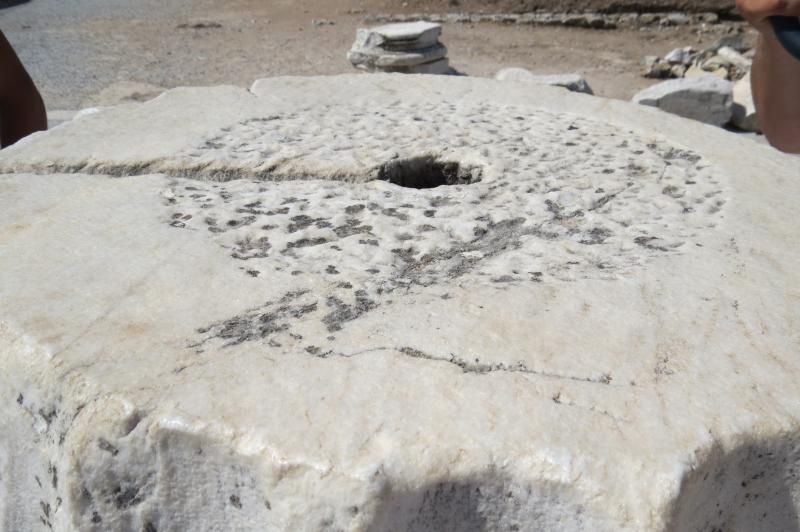 Each section has a roughened area in the middle, with grooves that act like veins and a hole bored through the middle. As the shaft is erected molten metal is poured in forming a solid core that reinforces the structure and holds it rigid. The remains of this are easily seen once you know what you are looking for.
Each section has a roughened area in the middle, with grooves that act like veins and a hole bored through the middle. As the shaft is erected molten metal is poured in forming a solid core that reinforces the structure and holds it rigid. The remains of this are easily seen once you know what you are looking for.
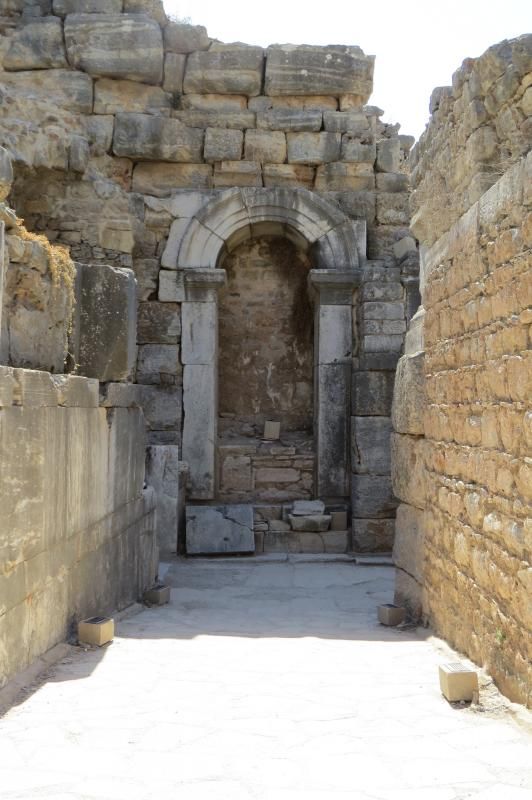 |
| Archway at the ground level entrance to the small amphitheatre. |
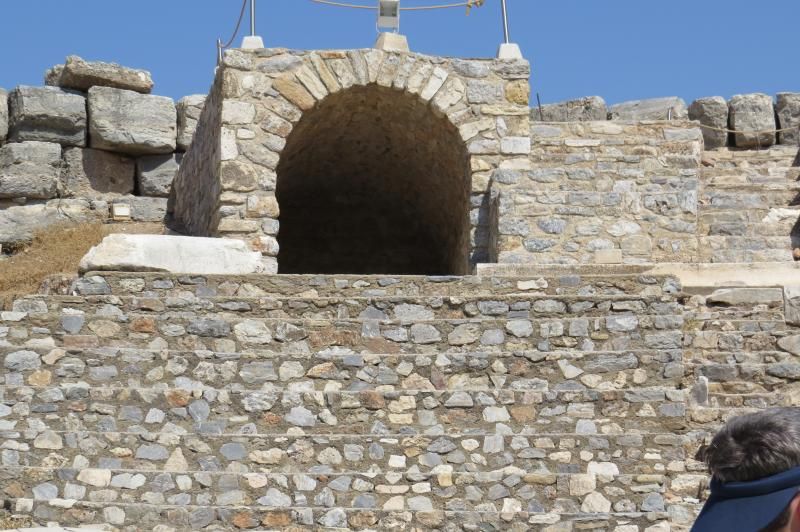 |
| One of the spectators entrances at the top of the small amphitheatre |
 |
| Inscribed columns |
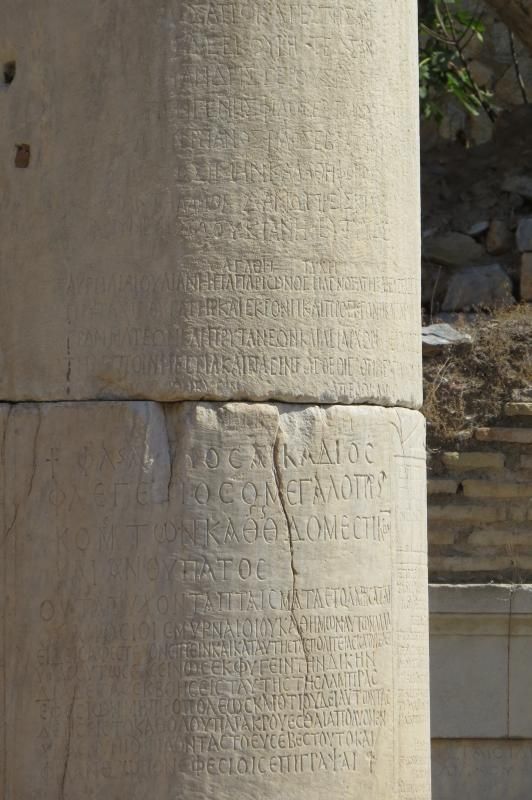 |
| Close up of some of the inscriptions |
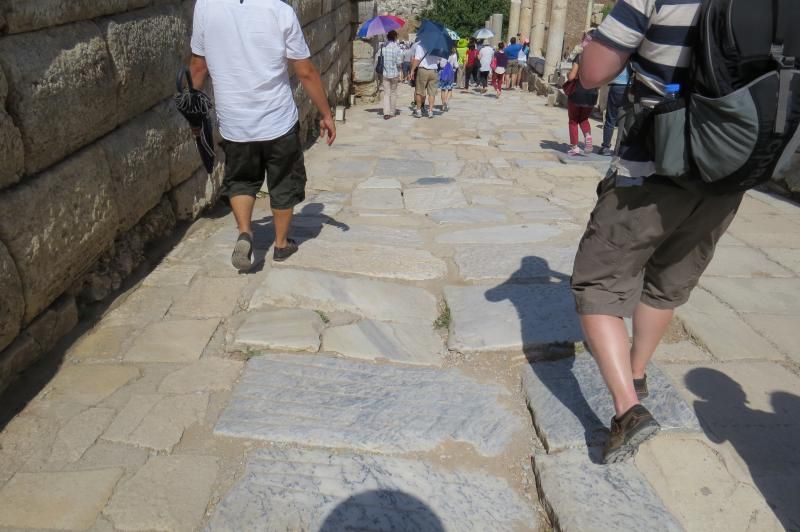 One very common feature of our travels in ancient cities is that the ground is very uneven, worn and hard to walk on. By hard, I mean HARD! My feet ached so much! I could walk all day without tiring but my feet got very sore from all the cobblestones etc. Here they were also super slippery from millennia of feet wearing them down.
One very common feature of our travels in ancient cities is that the ground is very uneven, worn and hard to walk on. By hard, I mean HARD! My feet ached so much! I could walk all day without tiring but my feet got very sore from all the cobblestones etc. Here they were also super slippery from millennia of feet wearing them down.
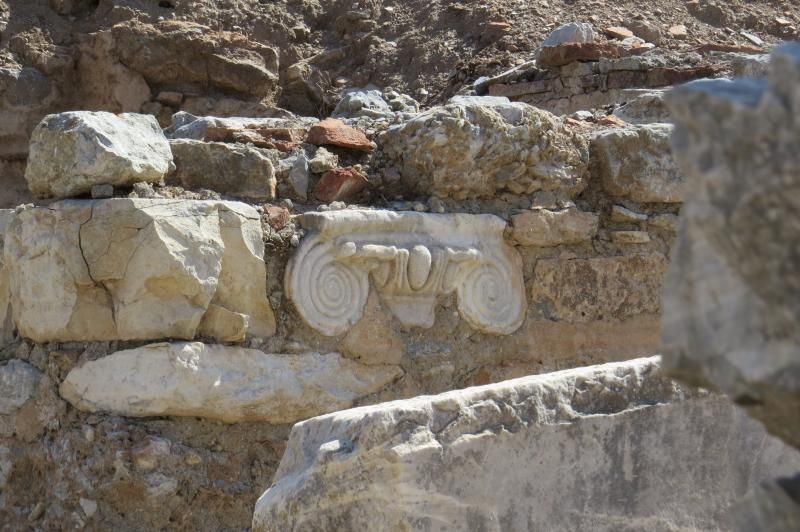 |
| Elements of older structures were incorporated into newer ones |
And of course no visit to Ephesus is complete without this:
Next was the street of the Curetes. The street was decorated by statues, wealthy homes, posh stores, memorials, temples, fountains, porticos. By this time it was incredibly hot and getting more and more crowded.
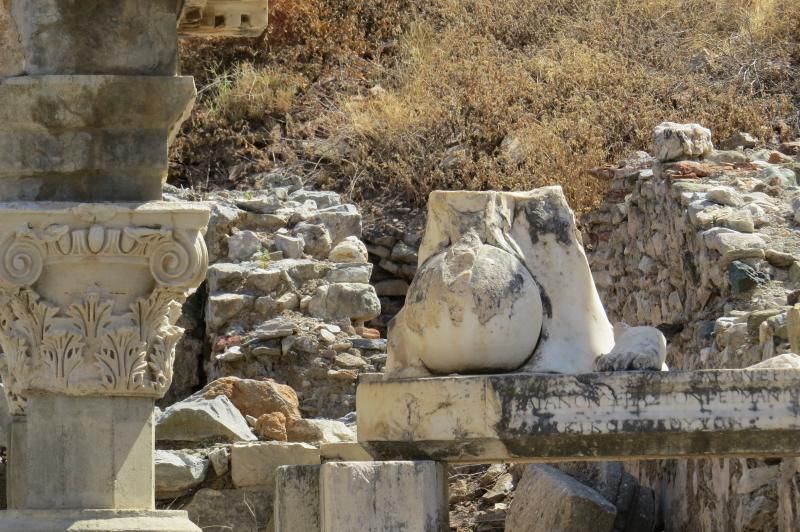 |
| All that is left of Emperor Trajan - who once ruled the Roman empire - is his foot! |
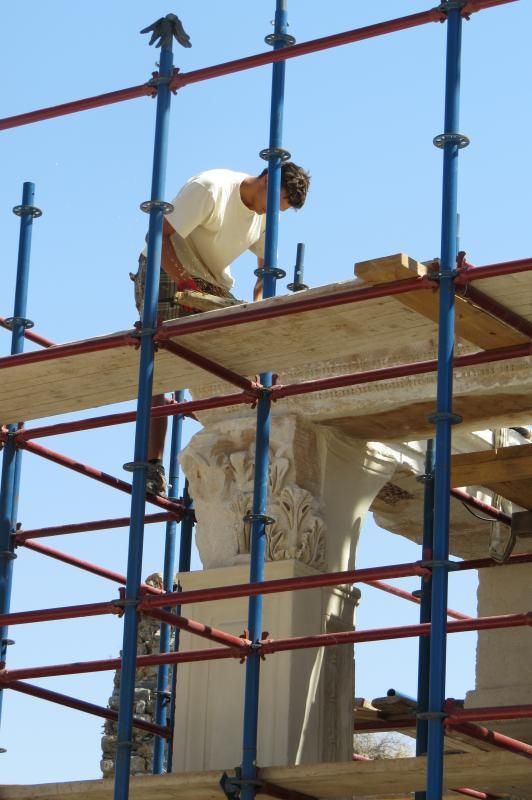 |
| Work continues - despite the constant stream of tourists |
These were a set of shops with apartments above. Each shop had its own unique mosaic that referred to the wares sold within. In the background you can see the protective structure over the top of the terraced houses. These required a separate ticket (and payment) to visit.
Before visiting the Terraced Houses (which was included as part of out tour) we had to make a quick toilet stop!
These ancient dunnies were amazingly hygienic and functional - more so than modern port-a-loos or long drops. They were also incredibly public and quite the social gathering place, which I would find a little inhibiting!
 A constant stream of fresh water ran through a deep trench under the seats - carrying away waste and any resulting odour. In front of the seats was a shallower gutter in which more fresh water was diverted so that when people had finished using the toilets they could reach down and get water (on a sponge) to clean themselves. Naturally there was a hierarchy, and the higher you were in it the further upstream you got to sit! In addition, richer people would have their slaves sit for a while to warm up their seat before using it. In the centre of the toilets was a large square which we were told was used for various performances and entertainment.
A constant stream of fresh water ran through a deep trench under the seats - carrying away waste and any resulting odour. In front of the seats was a shallower gutter in which more fresh water was diverted so that when people had finished using the toilets they could reach down and get water (on a sponge) to clean themselves. Naturally there was a hierarchy, and the higher you were in it the further upstream you got to sit! In addition, richer people would have their slaves sit for a while to warm up their seat before using it. In the centre of the toilets was a large square which we were told was used for various performances and entertainment.
 The site itself was fascinating and much more extensive than we had realised. This was a large and busy town! As we progressed through it got more and more crowded and the day got hotter and hotter.
The site itself was fascinating and much more extensive than we had realised. This was a large and busy town! As we progressed through it got more and more crowded and the day got hotter and hotter.

 Each section has a roughened area in the middle, with grooves that act like veins and a hole bored through the middle. As the shaft is erected molten metal is poured in forming a solid core that reinforces the structure and holds it rigid. The remains of this are easily seen once you know what you are looking for.
Each section has a roughened area in the middle, with grooves that act like veins and a hole bored through the middle. As the shaft is erected molten metal is poured in forming a solid core that reinforces the structure and holds it rigid. The remains of this are easily seen once you know what you are looking for.



 One very common feature of our travels in ancient cities is that the ground is very uneven, worn and hard to walk on. By hard, I mean HARD! My feet ached so much! I could walk all day without tiring but my feet got very sore from all the cobblestones etc. Here they were also super slippery from millennia of feet wearing them down.
One very common feature of our travels in ancient cities is that the ground is very uneven, worn and hard to walk on. By hard, I mean HARD! My feet ached so much! I could walk all day without tiring but my feet got very sore from all the cobblestones etc. Here they were also super slippery from millennia of feet wearing them down.
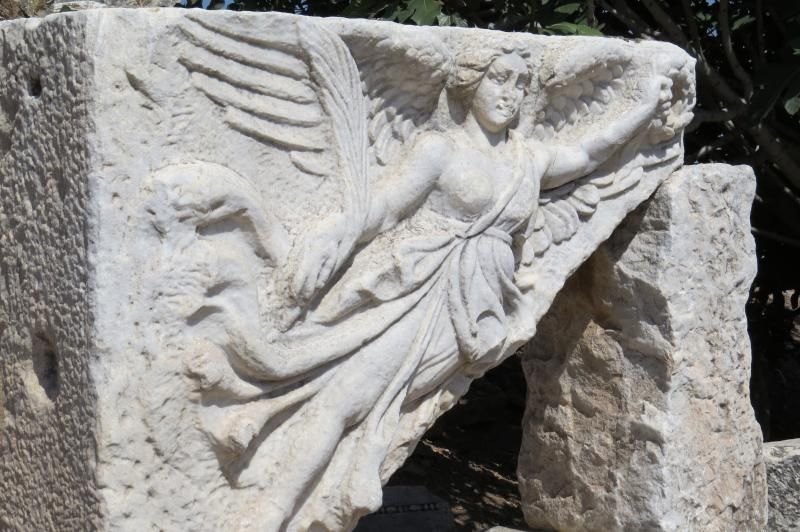


 A constant stream of fresh water ran through a deep trench under the seats - carrying away waste and any resulting odour. In front of the seats was a shallower gutter in which more fresh water was diverted so that when people had finished using the toilets they could reach down and get water (on a sponge) to clean themselves. Naturally there was a hierarchy, and the higher you were in it the further upstream you got to sit! In addition, richer people would have their slaves sit for a while to warm up their seat before using it. In the centre of the toilets was a large square which we were told was used for various performances and entertainment.
A constant stream of fresh water ran through a deep trench under the seats - carrying away waste and any resulting odour. In front of the seats was a shallower gutter in which more fresh water was diverted so that when people had finished using the toilets they could reach down and get water (on a sponge) to clean themselves. Naturally there was a hierarchy, and the higher you were in it the further upstream you got to sit! In addition, richer people would have their slaves sit for a while to warm up their seat before using it. In the centre of the toilets was a large square which we were told was used for various performances and entertainment.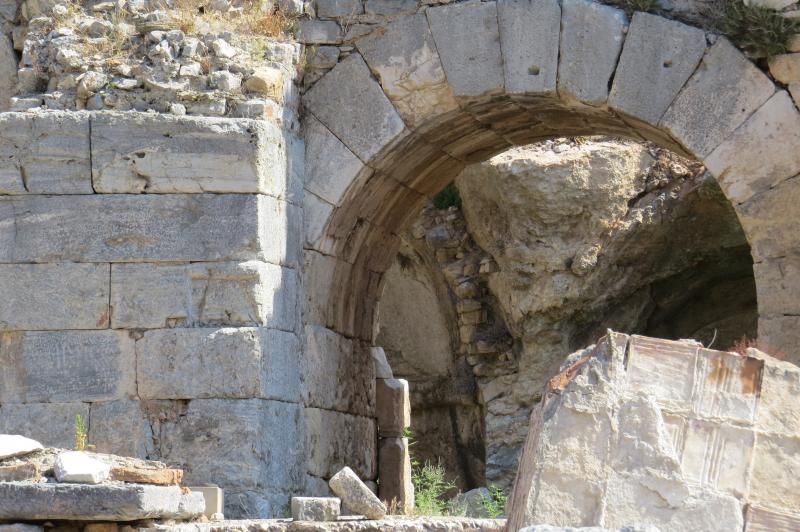
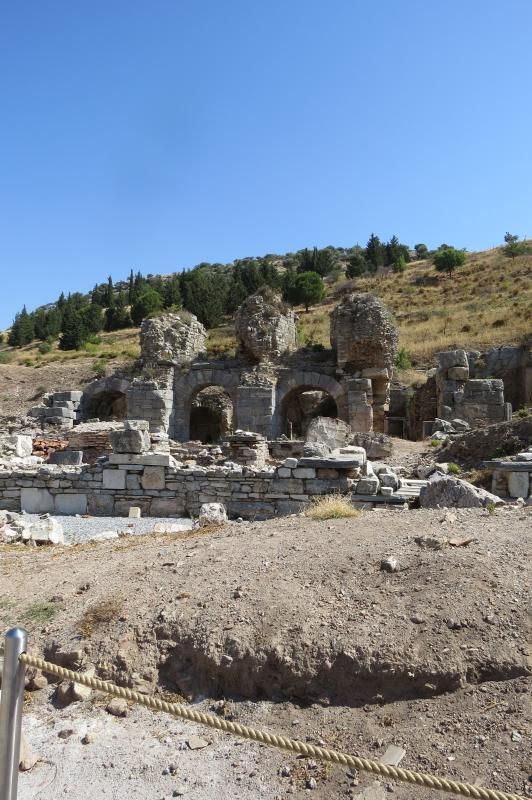

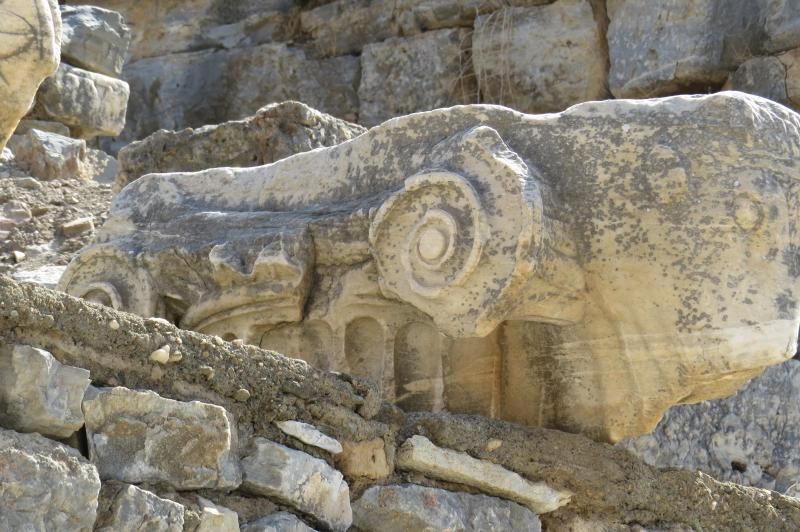
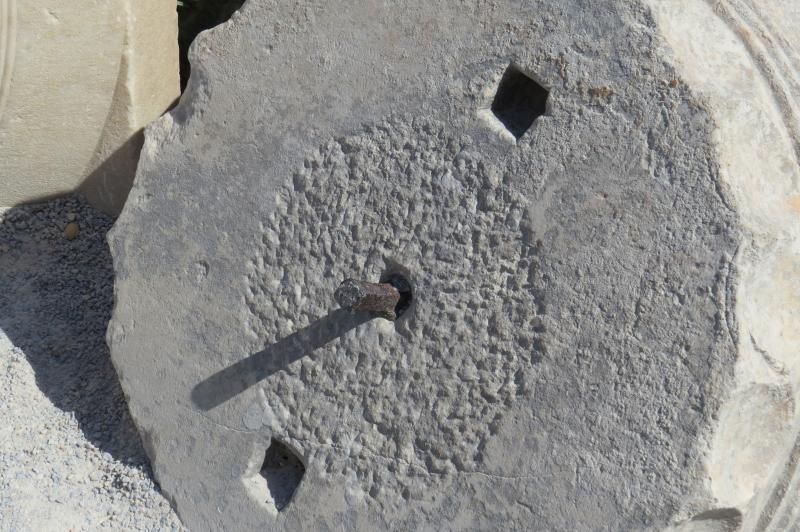
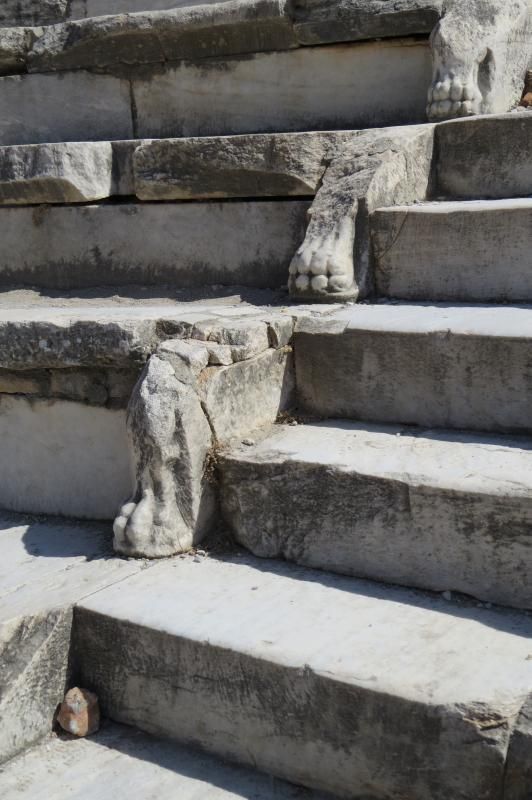


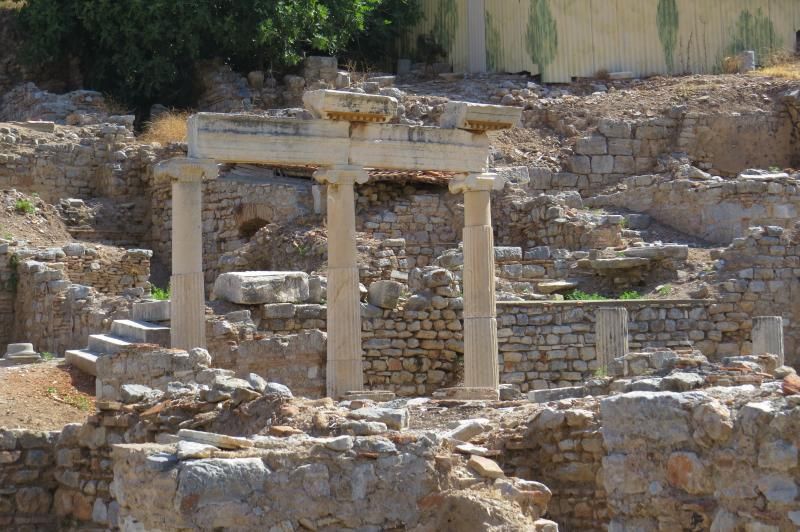
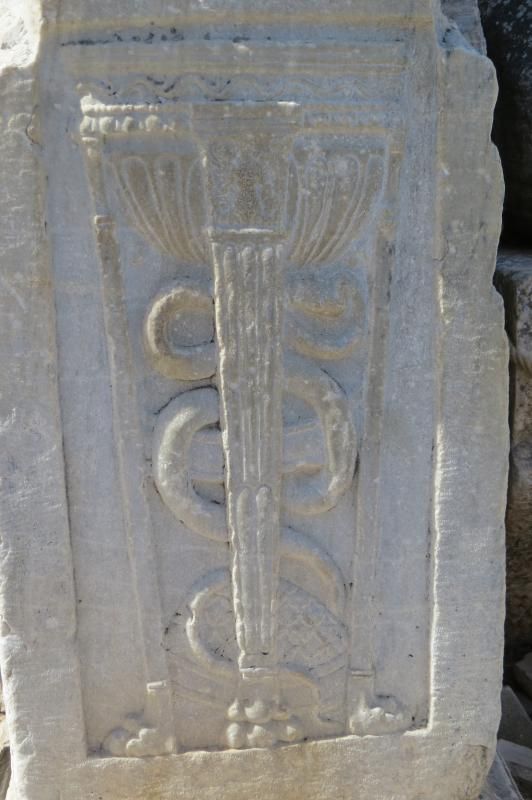
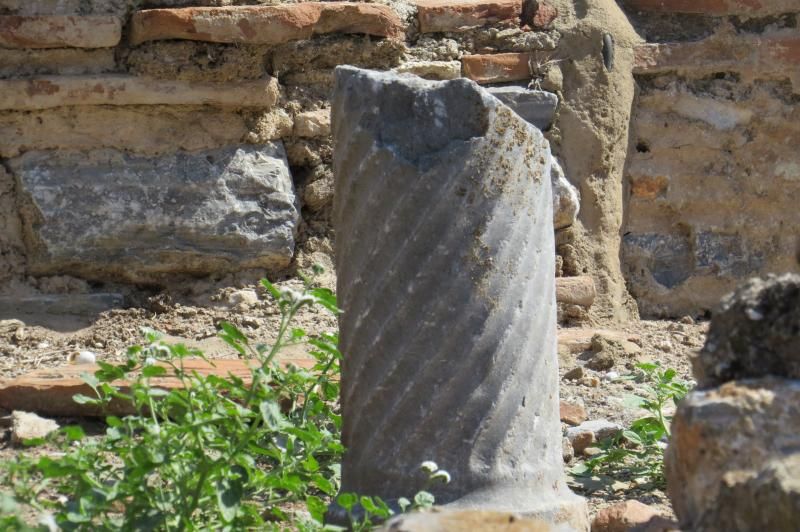

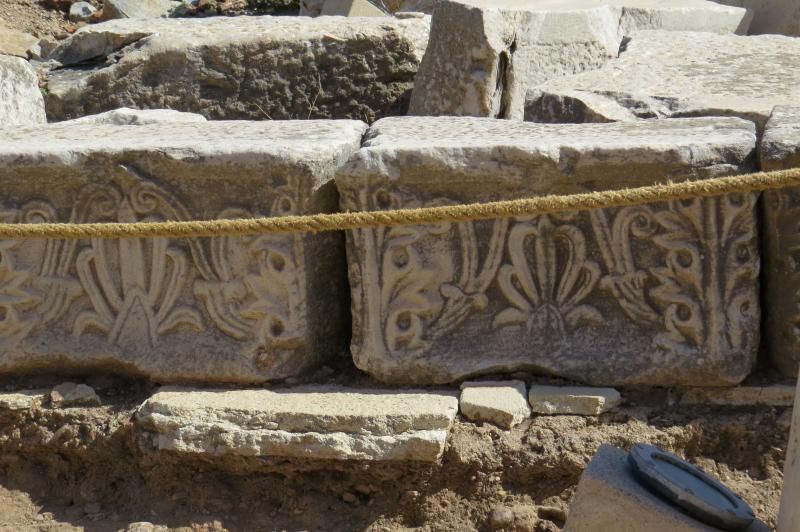
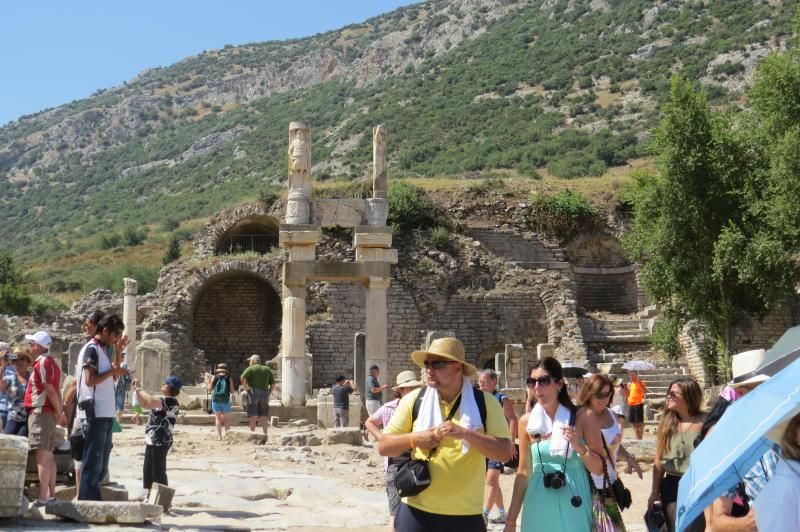

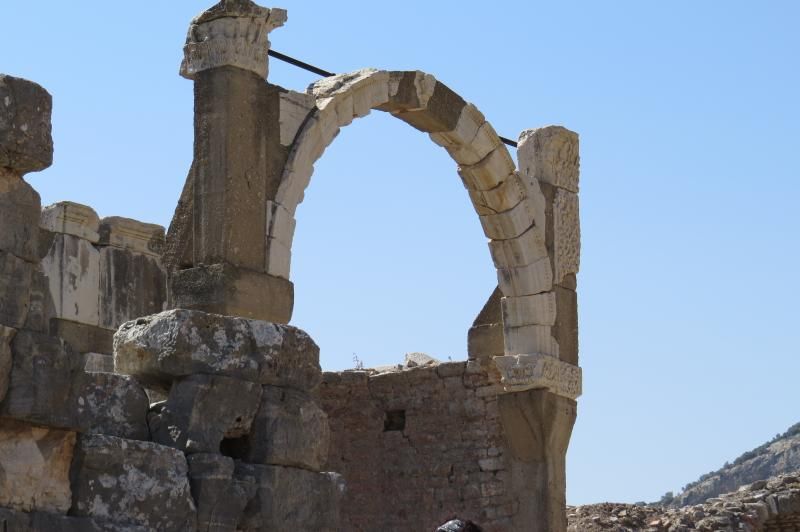
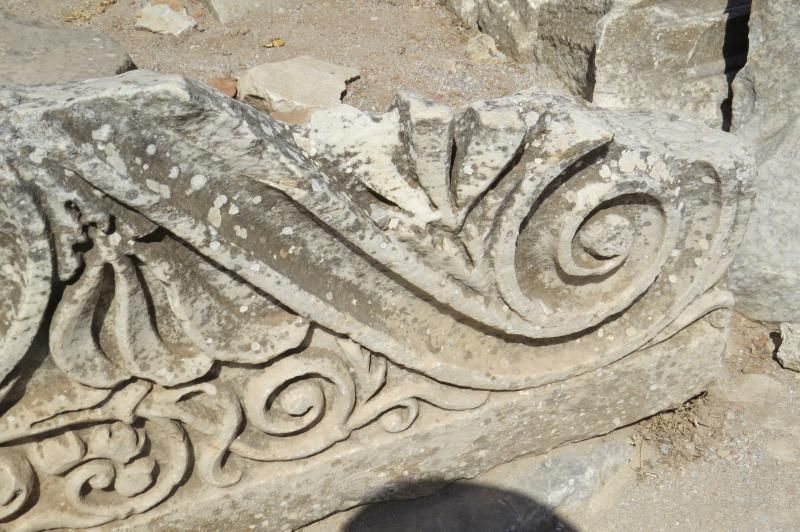
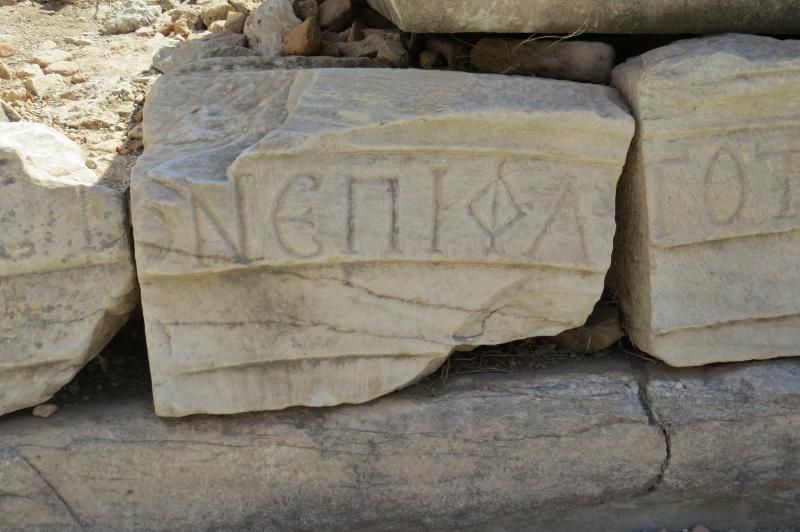
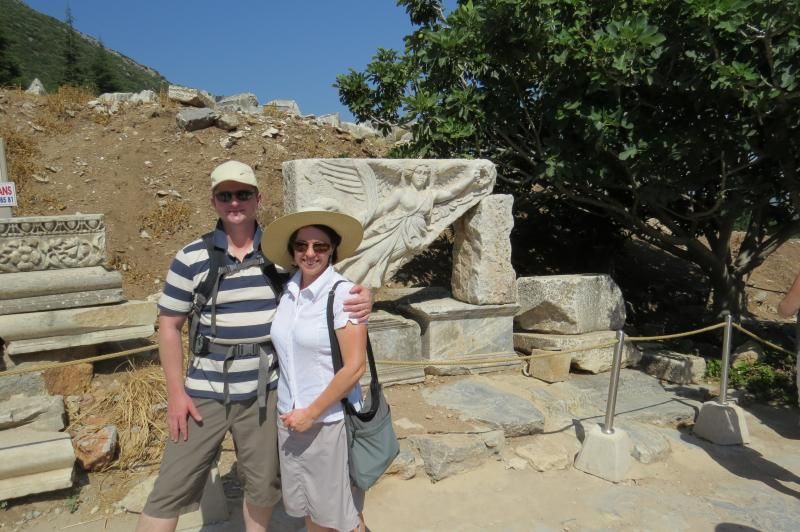
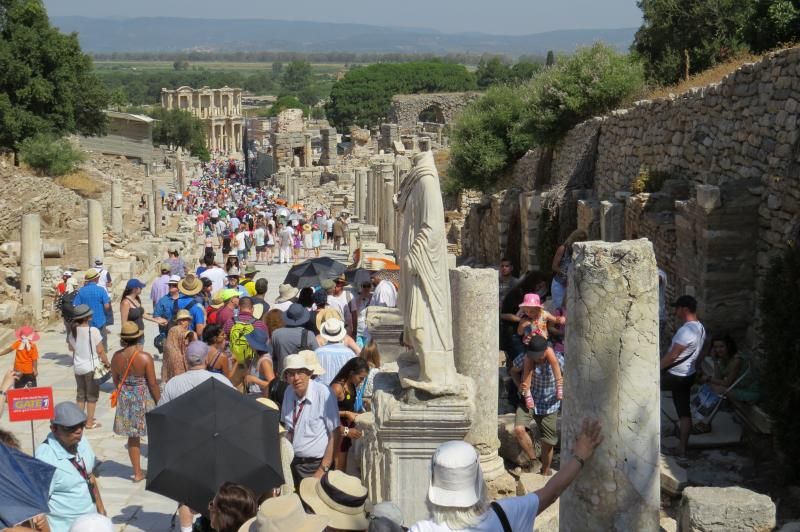
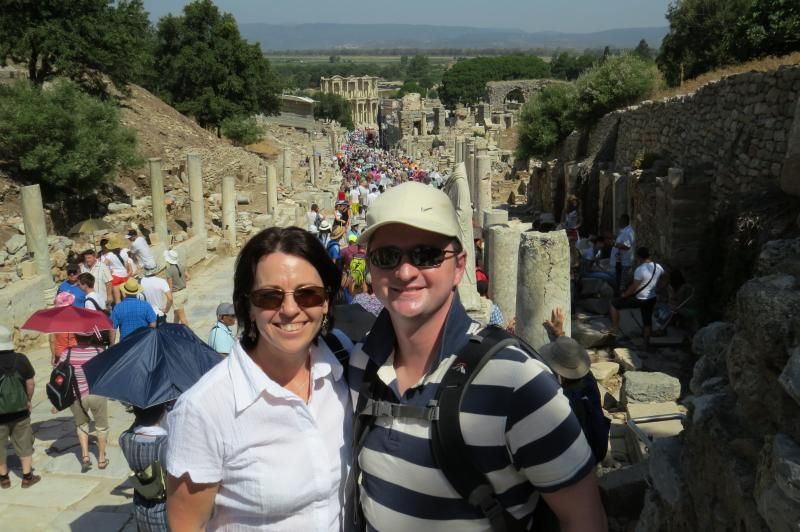
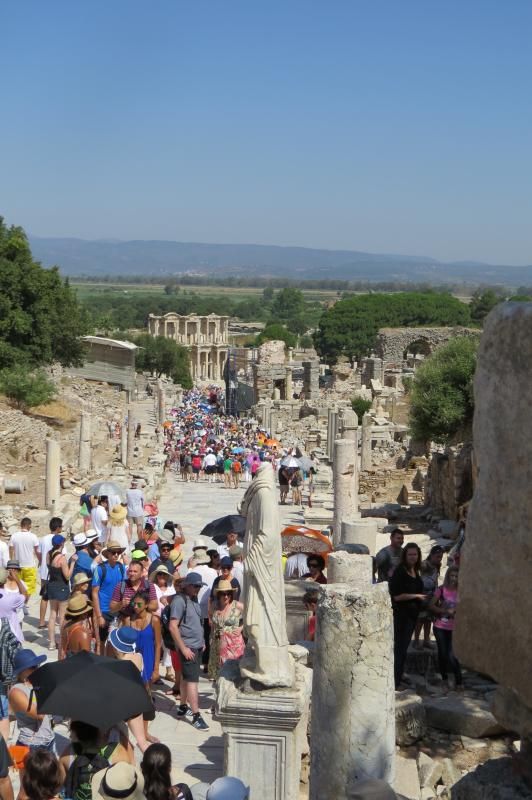
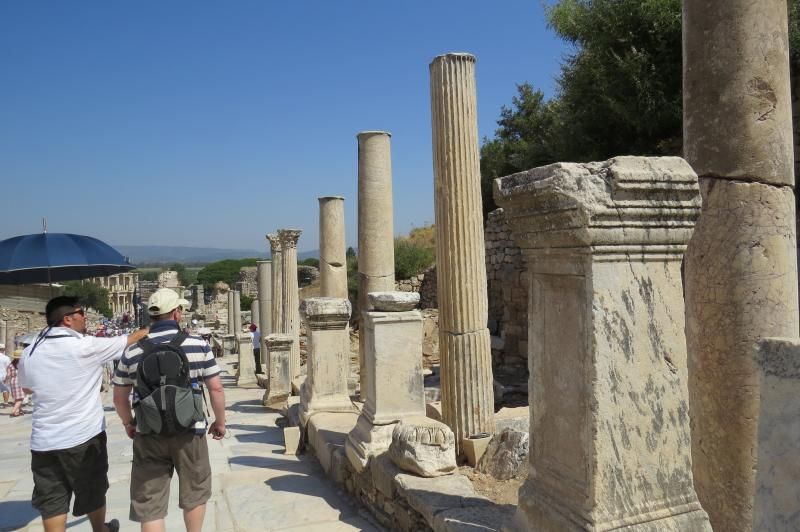
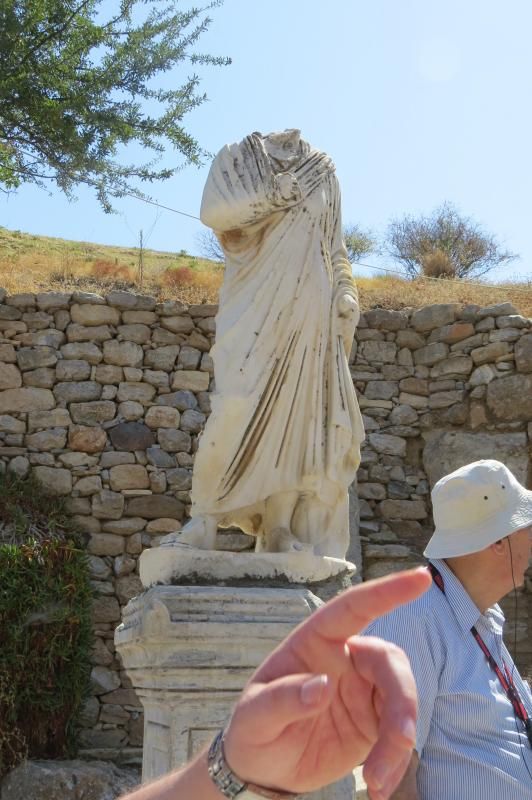
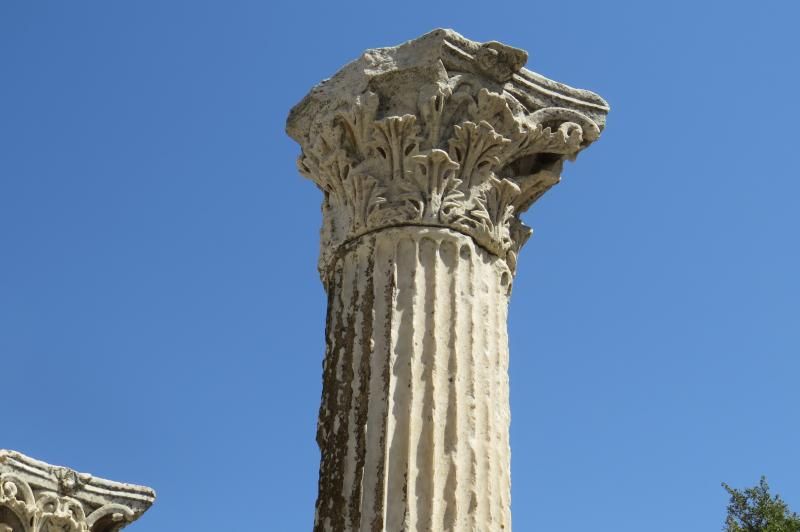
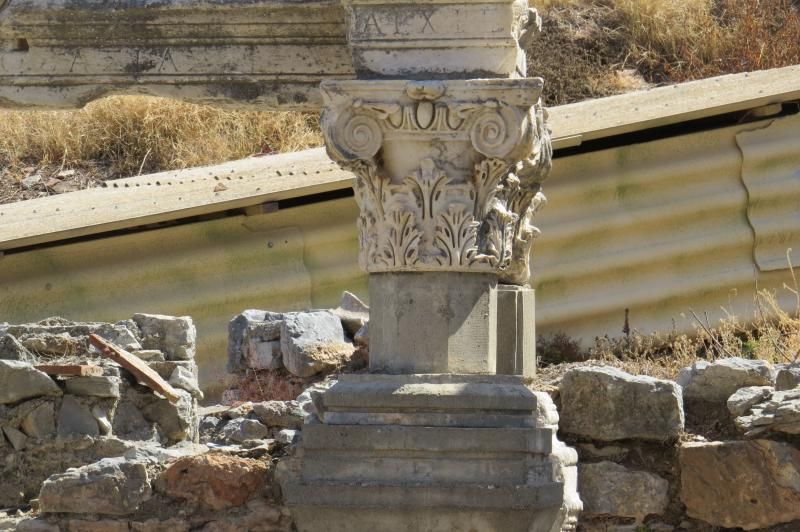
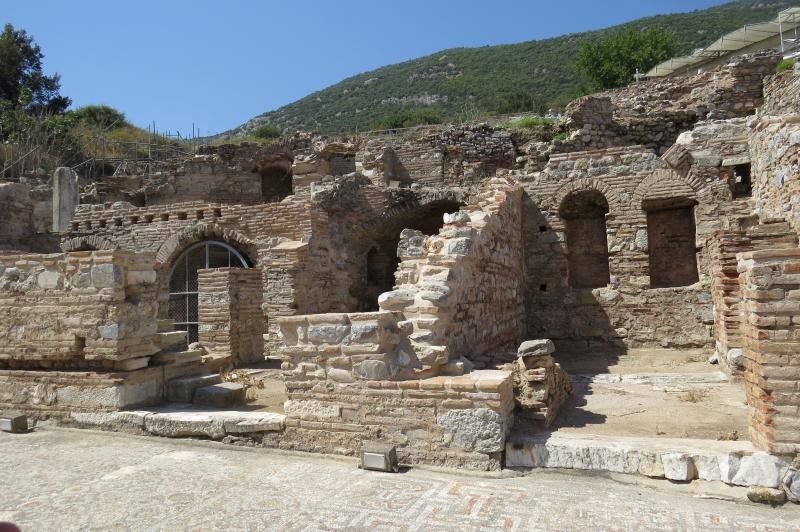
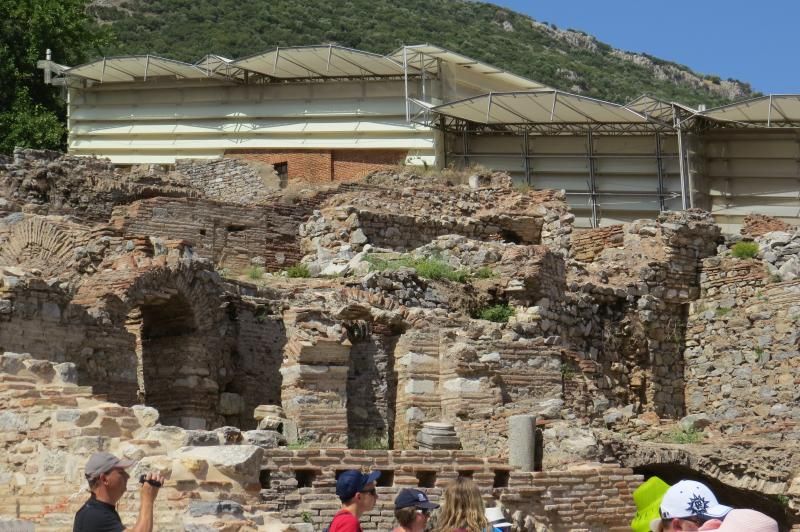
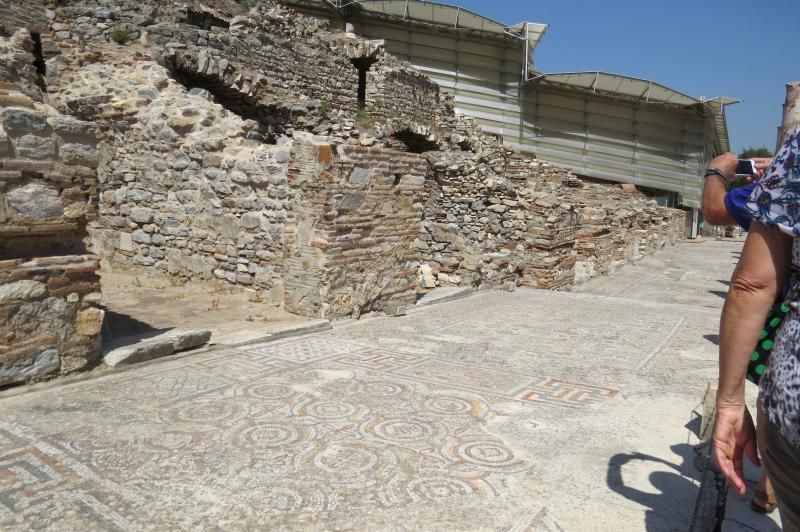
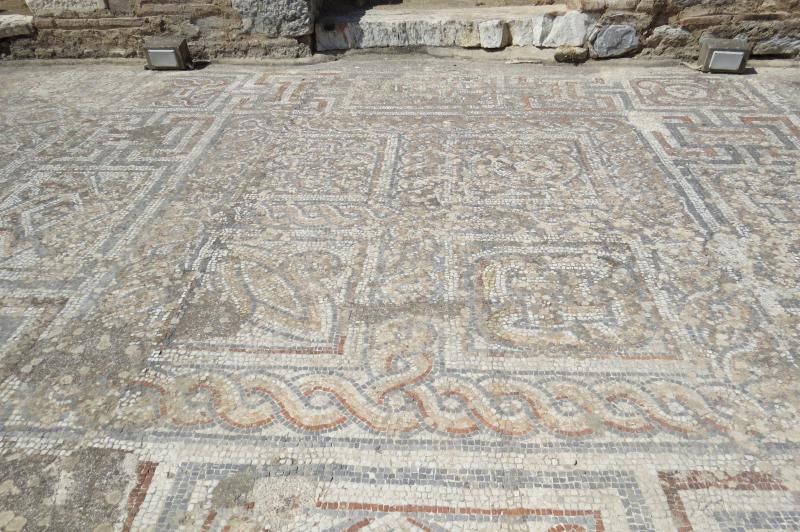
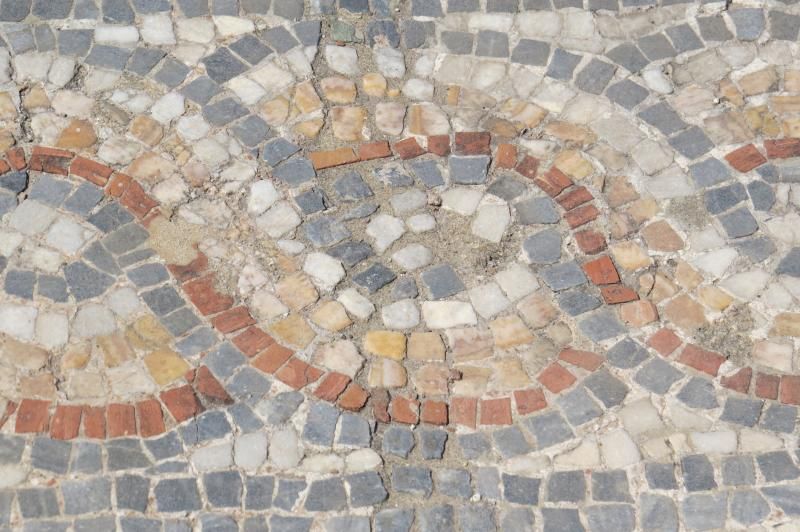
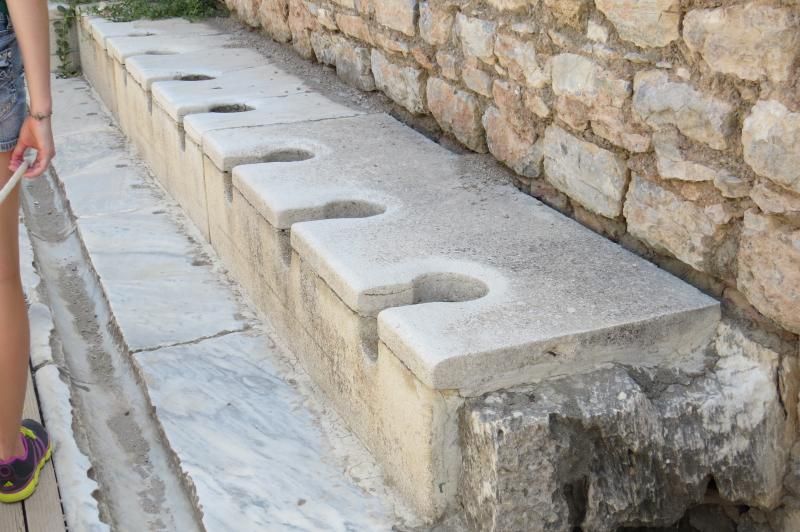
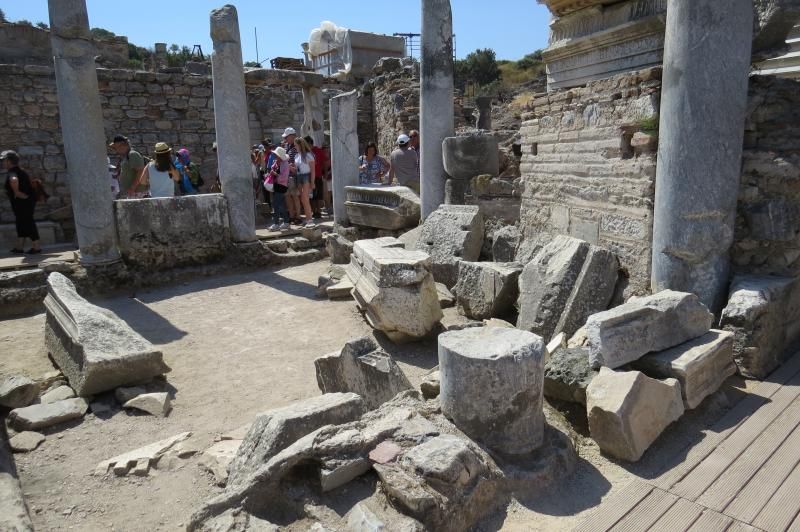
No comments:
Post a Comment